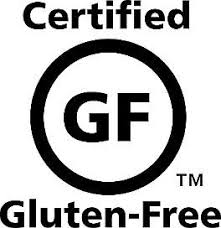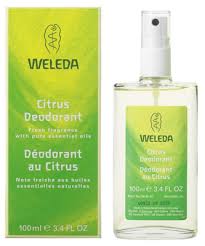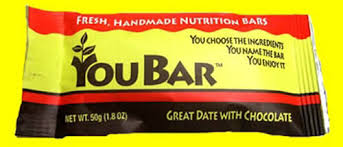 maive by mistybliss (flickr.com)
maive by mistybliss (flickr.com)We're talking about babies, about the most vulnerable. This really makes me angry.
washingtonpost.com
Public health groups, consumer advocates and members of Congress blasted the Food and Drug Administration yesterday for failing to act after discovering trace amounts of the industrial chemical melamine in baby formula sold in the United States.
"This FDA, this Bush administration, instead of protecting the public health, is protecting industry," said Rep. Rosa DeLauro (D-Conn.), who chairs the Appropriations subcommittee that oversees the FDA budget. In an interview, DeLauro said she wants the agency to disclose its findings and to develop a plan to remove melamine from formula. "We're talking about babies, about the most vulnerable. This really makes me angry."
The FDA found melamine and cyanuric acid, a related chemical, in samples of baby formula made by major U.S. manufacturers. Melamine can cause kidney and bladder stones and, in worst cases, kidney failure and death. If melamine and cyanuric acid combine, they can form round yellow crystals that can also damage kidneys and destroy renal function.
Melamine was found in Good Start Supreme Infant Formula With Iron made by Nestle, and cyanuric acid was detected in Enfamil Lipil With Iron infant formula powder made by Mead Johnson. A spokesman for Nestle did not respond to repeated calls and e-mails for comment yesterday.
Gail Wood, a spokeswoman for Mead Johnson, said the company does not think that cyanuric acid poses a health threat to infants. "Cyanuric acid is approved by the FDA to sanitize processing equipment," she said. "The risks of not sanitizing equipment are far greater than ultra trace amounts of residual cyanuric acid found in the formula."
The FDA has been testing hundreds of food products for melamine in the aftermath of a scandal this year involving Chinese infant formula tainted with melamine. Chinese manufacturers deliberately added the chemical to watered-down formula to make it appear to contain higher levels of protein. More than 50,000 Asian infants were hospitalized, and at least four died.
The FDA collected 87 samples of infant formula made by American manufacturers, tested all but 10 of them and held a conference call Monday with manufacturers to alert them to the preliminary findings, FDA spokeswoman Judy Leon said. She said she did not know when the agency was planning to inform the public.
The test results were unearthed by the Associated Press, which had filed a request for records under the Freedom of Information Act.
Leon said that the amounts discovered are safe and that parents should continue to feed formula to their children. "We know that trace levels do not pose a risk whatsoever," she said.
That contradicts the agency's recent statements about melamine, including a position paper that was on its Web site yesterday that asserted there are no safe levels of melamine for infants. "FDA is currently unable to establish any level of melamine and melamine-related compounds in infant formula that does not raise public health concerns," the document said.
Agency scientists have maintained they could not set a safe level of melamine exposure for babies because they do not understand the effects of long-term exposure on a baby's developing kidneys. The problem is exacerbated by the fact that infant formula is a baby's sole source of food for many months. Premature infants absorb an especially large dose of the chemical, compared with full-term babies.
"Just one month ago, the FDA had been very clear about how they could not set a safe level of melamine in formula for babies," said Sonya Lunder, a senior analyst at the Environmental Working Group, an advocacy organization. "Now they're saying trace levels are no problem. What changed?"
The FDA thinks the melamine and cyanuric acid got into the U.S. formula as a byproduct of manufacturing and not as a result of tampering, Leon said. Melamine is found in plastic food packaging and in cleaning solutions that are sometimes used in food processing equipment.
The FDA spokeswoman said no illnesses have been linked to melamine consumption in the United States.
But Jean Halloran, director of food policy initiatives for Consumers Union, said that may not be true. "Given that this is not a problem that American doctors are used to dealing with, we can't be sure that if a small number of these cases developed, the connection would be made," said Halloran, who wants the formulas to be recalled from store shelves. "We just don't know."
Halloran said it is also possible some babies are receiving a variety of infant formula and could be ingesting melamine in one bottle and cyanuric acid in another bottle, creating a dangerous mix.
Rep. Bart Stupak (D-Mich.), who is on the House Commerce and Energy Committee, is also seeking a recall. "Until they establish a safety standard, how can they say what's safe?" he said. "They need to pull this."
Critics said the FDA's reassurances about products carry less weight after the recent controversy over bisphenol-A, a chemical found in plastic baby bottles, dinnerware and the linings of food cans. The FDA dismissed a growing body of scientific evidence that has linked BPA to health problems even as worried consumers stopped buying BPA-containing products. Instead, the FDA relied on two industry-funded studies that concluded that BPA did not pose a health risk. Last month, the agency's science advisory board said the agency should no longer maintain that BPA is safe.
"When FDA claims there isn't any reason to worry, that's exactly what the consumer should do," said Ken Cook, president of Environmental Working Group. "The once-revered public health agency has morphed into a taxpayer-funded public relations arm for the very industries it was created to oversee."
washingtonpost.com COMMENT
You're all so polite, and articulate -- my first response was to tell the corporate and Bush spokespeople to blow it out their *ss.
Often times, the corporate PR and/or government people aren't even informed or intelligent enough to understand the garbage they spew -- they just follow that corporate PR template, no matter how cliche, or mundane.
And they'll still shill for those who through laziness and malfeasance poison children, and adults, worldwide, even though they should know better.
Corporations are still accountable to the people, no matter what the CEO's tell themselves, or whom they think they own, politically.
Bad business, and they wonder WHY they go broke... -thegreatpotatospamof2003
FDA Draws Fire







































